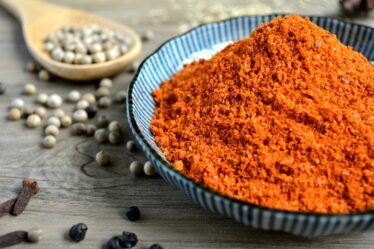
Spices have been an integral part of human civilization for thousands of years. From ancient times to the present day, spices have played a crucial role in enhancing the flavors of our food and adding depth and complexity to our culinary creations. The history of spices is a fascinating one, with explorers and traders venturing to distant lands in search of these precious commodities.
Spices are derived from various parts of plants, such as seeds, bark, roots, and fruits, and each spice has its own unique flavor profile. They can be used in both sweet and savory dishes, and their versatility is one of the reasons why they are so highly valued in the culinary world.
Some of the most popular spices include cinnamon, cumin, turmeric, ginger, cloves, and cardamom. These spices are used in a wide range of cuisines around the world, from Indian curries to Mexican salsas to Moroccan tagines. The flavors they impart can be bold and intense or subtle and delicate, depending on how they are used.
Key Takeaways
- Spice flavours are an essential part of cuisines around the world.
- Understanding the science behind spice flavours can help enhance cooking.
- Aromatic spices have distinct aroma and flavour profiles.
- Heat levels of spices can vary greatly and should be used carefully.
- Combining sweet and spicy flavours can create a unique taste experience.
Understanding the Science behind Spice Flavours
The flavors of spices are derived from the chemical compounds they contain. These compounds interact with our taste buds and olfactory receptors to create the sensations we perceive as flavor. For example, the compound responsible for the pungent flavor of black pepper is called piperine.
When we consume spices, they stimulate our taste buds, which are located on our tongues. Different taste buds are sensitive to different flavors: sweet, sour, salty, bitter, and umami. Spices can enhance or balance these flavors depending on how they are used.
In addition to taste buds, our sense of smell also plays a crucial role in flavor perception. Aroma compounds in spices are released when they are heated or crushed, and these compounds travel through our nasal passages to our olfactory receptors. This is why spices that have a strong aroma, such as cinnamon or cloves, can have such a powerful impact on our perception of flavor.
The Role of Spice Flavours in Different Cuisines
Spices are an essential component of many different cuisines around the world. They not only add flavor but also contribute to the overall character and identity of a dish. Different cuisines have their own unique spice blends and flavor profiles, which reflect the cultural and historical influences of the region.
For example, Indian cuisine is known for its bold and complex flavors, which are achieved through the use of a wide variety of spices. Some of the most commonly used spices in Indian cooking include cumin, coriander, turmeric, cardamom, and cloves. These spices are used in different combinations to create the distinctive flavors of dishes like curry, biryani, and masala.
In contrast, Mexican cuisine relies heavily on spices like chili peppers, cumin, oregano, and cilantro. These spices give Mexican dishes their characteristic heat and earthy flavors. Spices are used in both dry form and as pastes or sauces to create dishes like salsa, mole, and adobo.
Regional variations in spice usage can also be seen within a single cuisine. For example, in Thai cuisine, the flavors of the northern region are influenced by Chinese and Burmese cuisines and tend to be milder and less spicy compared to the flavors of the southern region, which are influenced by Malaysian and Indonesian cuisines and are known for their intense heat.
Aromatic Spices: Aroma and Flavour Profile
| Aromatic Spice | Aroma Profile | Flavour Profile |
|---|---|---|
| Cinnamon | Sweet, warm, woody | Sweet, warm, slightly spicy |
| Cloves | Pungent, sweet, warm | Pungent, sweet, slightly bitter |
| Cardamom | Sweet, floral, spicy | Sweet, spicy, slightly citrusy |
| Nutmeg | Sweet, warm, nutty | Sweet, nutty, slightly spicy |
| Star Anise | Sweet, licorice-like, slightly spicy | Sweet, licorice-like, slightly bitter |
Aromatic spices are those that have a strong aroma and impart a distinct flavor to dishes. They are often used in small quantities to add depth and complexity to a dish. Some examples of aromatic spices include cinnamon, cloves, cardamom, nutmeg, and star anise.
Cinnamon is a versatile spice that can be used in both sweet and savory dishes. It has a warm and sweet aroma, with a slightly spicy flavor. Cinnamon is commonly used in baking, as well as in dishes like curries, stews, and rice pilafs.
Cloves have a strong and pungent aroma, with a slightly sweet and spicy flavor. They are often used in spice blends like garam masala and are also used to flavor drinks like mulled wine or chai tea.
Cardamom has a unique and complex flavor profile, with hints of citrus, mint, and spice. It is commonly used in Indian and Middle Eastern cuisines, where it is used to flavor both sweet and savory dishes. Cardamom is often used in desserts like rice pudding or in savory dishes like biryani or curry.
Nutmeg has a warm and slightly sweet aroma, with a rich and nutty flavor. It is commonly used in baking, as well as in savory dishes like béchamel sauce or creamed spinach.
Star anise has a strong and licorice-like aroma, with a sweet and spicy flavor. It is commonly used in Chinese cuisine, where it is used to flavor dishes like braised meats or soups.
When using aromatic spices, it is important to use them sparingly, as their flavors can be overpowering if used in excess. They are often added at the beginning of the cooking process to allow their flavors to infuse into the dish.
Heat and Spice: Exploring the Different Levels of Heat
Spices can add heat to a dish, which can range from mild to extremely hot. The heat of spices is measured on the Scoville scale, which assigns a numerical value to the amount of capsaicin present in a spice. Capsaicin is the compound responsible for the heat in chili peppers.
Some examples of spicy spices include chili peppers, cayenne pepper, black pepper, and paprika. Chili peppers can vary widely in their heat levels, with some varieties being mild and others being extremely hot. The heat of chili peppers is measured in Scoville Heat Units (SHU), with the hottest peppers reaching over 2 million SHU.
Cayenne pepper is made from dried and ground chili peppers and has a moderate level of heat. It is commonly used in dishes like chili, curry, and Cajun cuisine.
Black pepper is one of the most commonly used spices in the world and has a moderate level of heat. It is used in both savory and sweet dishes and is often used as a table spice.
Paprika is made from dried and ground sweet or hot peppers and has a mild to moderate level of heat. It is commonly used in Hungarian cuisine, where it is used to flavor dishes like goulash or paprikash.
When using spicy spices, it is important to balance the heat with other flavors to avoid overpowering the dish. This can be done by adding sweetness, acidity, or richness to counteract the heat.
Sweet and Spicy: The Magic of Combining Flavours

The combination of sweet and spicy flavors can create a harmonious balance that tantalizes the taste buds. The sweetness can help to mellow out the heat of the spice, while the spice adds depth and complexity to the sweetness.
Some examples of sweet and spicy spice combinations include cinnamon and chili powder, ginger and cayenne pepper, or cardamom and black pepper. These combinations can be used in both sweet and savory dishes to create a unique flavor profile.
In Indian cuisine, for example, spices like cinnamon, cardamom, cloves, and nutmeg are often combined with chili powder or black pepper to create a balance of sweet and spicy flavors. This can be seen in dishes like biryani, where the sweetness of the spices is balanced by the heat of the chili powder.
In Mexican cuisine, spices like cinnamon and chocolate are often combined with chili peppers to create a balance of sweet and spicy flavors. This can be seen in dishes like mole, where the sweetness of the chocolate is balanced by the heat of the chili peppers.
When using sweet and spicy spice combinations, it is important to use them in moderation to avoid overpowering the dish. The sweetness and spiciness should complement each other rather than compete for attention.
Savoury Spices: Umami Flavours and their Culinary Applications
Umami is often referred to as the fifth taste, alongside sweet, sour, salty, and bitter. It is a savory flavor that is often described as meaty or brothy. Umami is derived from the amino acid glutamate, which is found naturally in certain foods.
Some examples of savoury spices include garlic, onion, mushrooms, soy sauce, and fish sauce. These spices are commonly used in Asian cuisines to add depth and richness to dishes.
Garlic has a pungent and slightly sweet flavor and is commonly used in savory dishes like pasta sauces, stir-fries, and soups.
Onion has a mild and slightly sweet flavor and is commonly used as a base for many dishes, such as stews, curries, and sauces.
Mushrooms have a rich and earthy flavor and are commonly used in dishes like risotto, stir-fries, and soups.
Soy sauce is made from fermented soybeans and has a salty and savory flavor. It is commonly used in Asian cuisines as a seasoning or condiment.
Fish sauce is made from fermented fish and has a salty and savory flavor. It is commonly used in Southeast Asian cuisines as a seasoning or condiment.
When using savoury spices, it is important to use them in moderation to avoid overpowering the dish. They can be used to enhance the flavors of other ingredients and add depth and complexity to a dish.
Spice Pairings: The Art of Balancing Flavours
Pairing spices with different ingredients is an art form that can elevate the flavors of a dish. When done correctly, spice pairings can create a harmonious balance of flavors that enhance each other.
Some general guidelines for pairing spices with ingredients include:
– Pairing strong spices with strong ingredients: Strong spices like cumin or chili powder can be paired with robust ingredients like beef or lamb, as their flavors can stand up to the intensity of the spices.
– Pairing delicate spices with delicate ingredients: Delicate spices like cardamom or saffron can be paired with delicate ingredients like fish or chicken, as their flavors can complement the subtlety of the ingredients.
– Pairing contrasting flavors: Contrasting flavors can create a dynamic and interesting flavor profile. For example, the sweetness of cinnamon can be paired with the heat of chili powder to create a balance of sweet and spicy flavors.
Some examples of spice pairings in different cuisines include:
– Indian cuisine: Cumin and coriander are often paired together in Indian cuisine to create a warm and earthy flavor profile. This combination is commonly used in dishes like curries, stews, and rice pilafs.
– Mexican cuisine: Cumin and chili powder are often paired together in Mexican cuisine to create a bold and spicy flavor profile. This combination is commonly used in dishes like chili, tacos, and enchiladas.
– Middle Eastern cuisine: Cinnamon and cardamom are often paired together in Middle Eastern cuisine to create a sweet and aromatic flavor profile. This combination is commonly used in dishes like rice pudding, baklava, and spiced tea.
When pairing spices with ingredients, it is important to taste as you go and adjust the flavors as needed. The goal is to create a balance of flavors that enhances the overall dish.
Health Benefits of Spices: Beyond Taste
In addition to their delicious flavors, spices also offer a wide range of health benefits. Many spices have been used for centuries in traditional medicine to treat various ailments and promote overall well-being.
Some examples of spices with medicinal properties include:
– Turmeric: Turmeric contains a compound called curcumin, which has powerful anti-inflammatory and antioxidant properties. It has been used in traditional Ayurvedic medicine to treat a variety of conditions, including arthritis, digestive disorders, and skin conditions.
– Ginger: Ginger has long been used as a natural remedy for nausea and digestive issues. It also has anti-inflammatory properties and may help to reduce muscle pain and soreness.
– Cinnamon: Cinnamon has been shown to help regulate blood sugar levels and improve insulin sensitivity. It also has antioxidant and anti-inflammatory properties.
– Garlic: Garlic has been used for centuries for its antimicrobial properties. It may help to boost the immune system and reduce the risk of certain diseases, such as heart disease and cancer.
– Cayenne pepper: Cayenne pepper contains a compound called capsaicin, which has been shown to have pain-relieving properties. It may also help to boost metabolism and aid in weight loss.
When incorporating spices into a healthy diet, it is important to use them in moderation and in combination with other nutritious foods. They can be added to dishes like soups, stews, stir-fries, or smoothies to enhance both the flavor and the nutritional value of the meal.
Cooking with Spices: Tips and Tricks for Enhancing Flavour
When cooking with spices, there are several tips and tricks that can help you maximize their flavor and aroma:
– Store spices properly: Spices should be stored in a cool, dark place to maintain their freshness and flavor. They should be kept in airtight containers to prevent moisture and air from degrading their quality.
– Toast and grind spices: Toasting spices before using them can help to release their flavors and aromas. Simply heat a dry skillet over medium heat, add the spices, and toast them for a few minutes until fragrant. Then, grind them using a mortar and pestle or a spice grinder.
– Use spices in marinades, rubs, and sauces: Spices can be used to add flavor to marinades, rubs, and sauces. They can be combined with other ingredients like oil, vinegar, or yogurt to create a flavorful base for meats, vegetables, or grains.
– Experiment with spice combinations: Don’t be afraid to experiment with different spice combinations to create unique flavor profiles. Start with small quantities and taste as you go to find the perfect balance of flavors.
– Be mindful of spice levels: When using spicy spices, it is important to consider the preferences and tolerance levels of your guests. Not everyone enjoys spicy food, so it is always a good idea to offer milder options or provide condiments like yogurt or sour cream to help cool down the heat.
In conclusion, spices are an essential part of the culinary world, adding depth, complexity, and flavor to our dishes. Understanding the science behind spice flavors can help us appreciate their impact on our taste buds and olfactory receptors. The role of spice flavors in different cuisines is vast and varied, with each culture having its own unique blend of spices that contribute to the distinctiveness of their dishes. From the fiery heat of chili peppers in Mexican cuisine to the aromatic blend of cinnamon, cloves, and cardamom in Indian cuisine, spices play a crucial role in defining the flavors and character of a particular cuisine. They not only enhance the taste of food but also have medicinal properties and can provide numerous health benefits. Whether it’s adding a pinch of cumin to a savory dish or a sprinkle of nutmeg to a sweet treat, spices have the power to elevate our culinary experiences and transport us to different corners of the world through their vibrant and tantalizing flavors.
If you’re a fan of spice flavors, you’ll definitely want to check out this article on Flavorful Sips about the culinary delight of Champagne grapes. These tiny grapes pack a punch with their unique combination of sweetness and spice, making them a perfect addition to any dish or cocktail. Whether you’re looking to elevate your cooking or simply want to explore new flavors, this article will provide you with all the information you need to make the most of these delicious grapes. So why wait? Click here to read more about the culinary delight of Champagne grapes and start spicing up your meals today!



